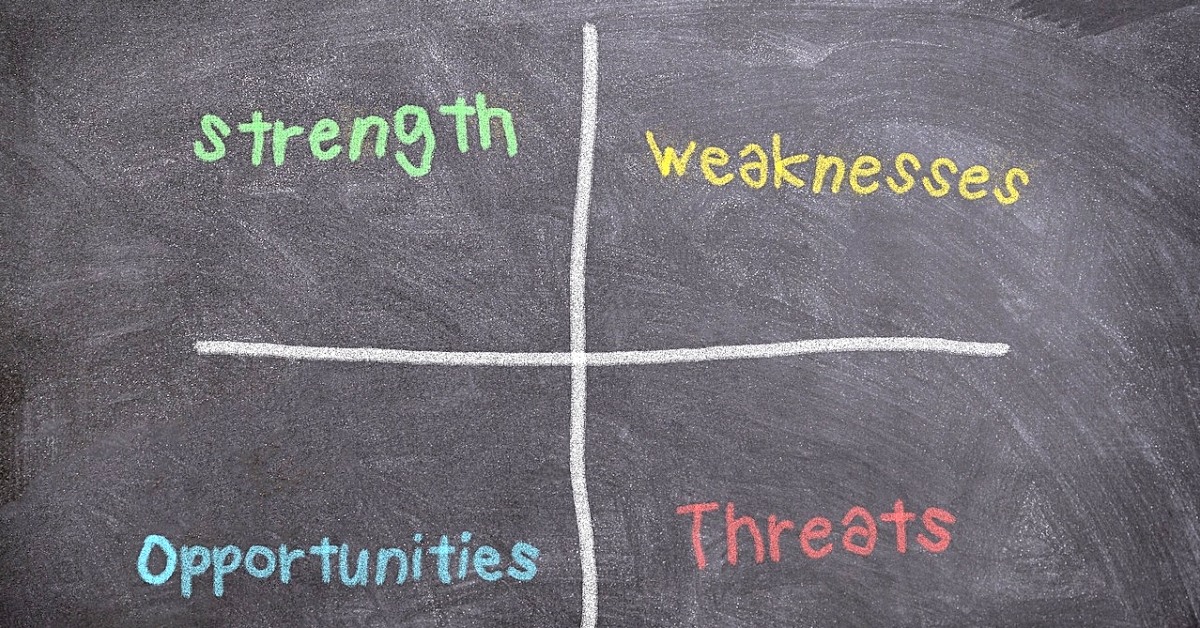Avoiding common mistakes in SWOT Analysis is crucial for any business or organization looking to effectively assess their strengths, weaknesses, opportunities, and threats. SWOT Analysis is a powerful tool that helps identify internal and external factors that can impact a company’s success. However, if not done correctly, it can lead to incorrect insights and decisions. In this article, we will discuss the tips and best practices to ensure you avoid these pitfalls and conduct a successful SWOT Analysis. Whether you are new to SWOT Analysis or looking to improve your current process, this article will provide valuable insights to help you make the most out of this strategic planning tool. So, let’s dive into the world of SWOT Analysis and learn how to avoid common mistakes for a more accurate and efficient analysis.
A SWOT analysis is a popular tool used for strategic planning, decision making, and personal development. It helps individuals and organizations identify their strengths, weaknesses, opportunities, and threats. However, conducting a SWOT analysis can be challenging, and there are common mistakes that people make. In this article, we will discuss how to avoid these mistakes and conduct a successful SWOT analysis.
Firstly, it is crucial to have a clear understanding of what a SWOT analysis is and its purpose. A SWOT analysis is a simple yet powerful tool that helps identify internal and external factors that can impact an individual or organization. These factors can be used to create strategies for growth and improvement. When conducting a SWOT analysis, it is essential to consider both internal factors, such as strengths and weaknesses, and external factors, such as opportunities and threats.
Avoiding common mistakes in SWOT analysis is crucial for its effectiveness. One common mistake is not involving enough stakeholders in the process. It is essential to have input from all levels of the organization to get a complete understanding of the strengths, weaknesses, opportunities, and threats.
Another mistake is not being honest about the strengths and weaknesses. It can be tempting to only focus on the positive aspects of an organization or individual, but it is crucial to also acknowledge the areas that need improvement. This will help in creating realistic strategies for growth.
Additionally, not considering external factors can lead to an incomplete analysis. It is important to look at the external environment, including market trends, competitors, and regulatory changes, to identify potential opportunities and threats.
Another common mistake is not setting clear objectives. Without clear objectives, it can be challenging to determine which factors are most important and which strategies will be most effective. It is important to set SMART goals (specific, measurable, achievable, relevant, and time-bound) to guide the SWOT analysis process.
Lastly, not following up on the results of a SWOT analysis can render the whole process useless. It is important to use the information gathered from the analysis to create actionable plans and regularly review and update them as needed.
In conclusion, a successful SWOT analysis requires a clear understanding of its purpose, consideration of both internal and external factors, involvement of stakeholders, honesty about strengths and weaknesses, setting clear objectives, and follow-up action. By avoiding common mistakes in SWOT analysis, individuals and organizations can use this powerful tool to create effective strategies for growth and improvement.
Assessing Threats
Threats are external factors that can negatively impact an organization or individual. It is important to carefully assess threats, such as market competition, changing consumer preferences, and economic factors. These threats can significantly affect the success and growth of a company or individual, making it crucial to identify and address them during a SWOT analysis.
Recognizing Weaknesses
Similarly, identifying weaknesses can be challenging as it requires honest self-reflection. It is crucial to identify both internal weaknesses, such as lack of resources or skills, and external weaknesses, such as market trends or competition.
Identifying Strengths
When conducting a SWOT analysis, it is important to accurately identify strengths. This can be done by analyzing the organization’s or individual’s unique capabilities, resources, and competitive advantages. It is also essential to differentiate between real strengths and perceived strengths.
Real strengths are tangible assets and skills that give an organization or individual a competitive advantage. These can include physical resources, intellectual property, strong relationships, and skilled employees.
Perceived strengths, on the other hand, are qualities that are believed to be strengths but may not actually contribute to a competitive advantage. These can include reputation, past successes, and personal biases.
To identify strengths, it is important to conduct thorough research and gather data from multiple sources. This can include analyzing financial reports, conducting market research, and soliciting feedback from customers and stakeholders.
It is also helpful to involve a diverse group of individuals in the SWOT analysis process. This can help to ensure that all perspectives are considered and potential biases are minimized.
In conclusion, accurately identifying strengths is crucial in conducting a successful SWOT analysis. By differentiating between real and perceived strengths and gathering thorough research and diverse perspectives, organizations and individuals can gain a clear understanding of their competitive advantages and utilize them effectively in strategic planning and decision making.
Considering Opportunities
When conducting a SWOT analysis, identifying opportunities is crucial for success. Opportunities are external factors that can benefit an organization or individual. These could include emerging markets, changing consumer behaviors, or advancements in technology. It is important to consider both current and potential opportunities when conducting a SWOT analysis. This means looking at current market trends and potential future developments. Additionally, it is important to assess the organization’s or individual’s strengths to determine how they can take advantage of these opportunities. By leveraging their strengths, an organization or individual can maximize the potential benefits of identified opportunities.
To effectively consider opportunities, it is important to gather relevant information and data. This could include conducting market research, analyzing industry reports, and staying up-to-date on current events. It may also be beneficial to seek input from external sources, such as customers or industry experts. By gathering a comprehensive understanding of the market and potential opportunities, an organization or individual can make more informed decisions during the SWOT analysis process.
It is also important to keep in mind that opportunities can also present potential threats. For example, a new market opportunity may also bring in increased competition. Therefore, it is essential to carefully analyze and evaluate all potential outcomes when considering opportunities in a SWOT analysis.
In conclusion, considering opportunities is a crucial aspect of conducting a successful SWOT analysis. By taking into account current and potential market trends and leveraging strengths, an organization or individual can identify and capitalize on external factors that can benefit them. However, it is important to carefully gather information and assess potential threats as well. With these tips and best practices in mind, you can avoid common mistakes and conduct a comprehensive and effective SWOT analysis.
In conclusion, conducting a SWOT analysis can be a valuable tool for personal and professional development. However, it is essential to avoid common mistakes to ensure its effectiveness. By accurately identifying strengths and weaknesses, considering opportunities and threats, and understanding the purpose of a SWOT analysis, individuals and organizations can use this tool to make informed decisions and create effective strategies for growth.

